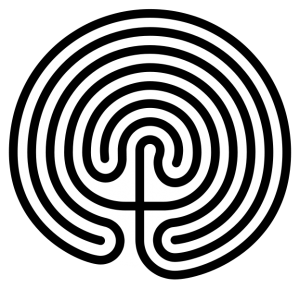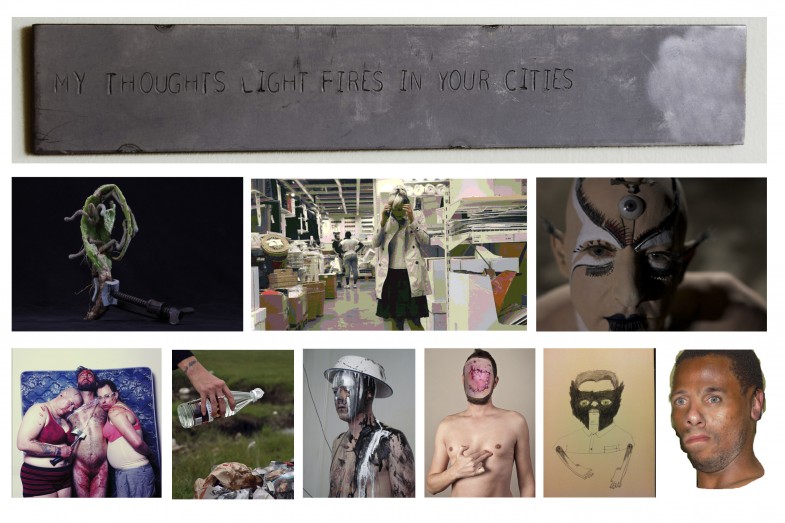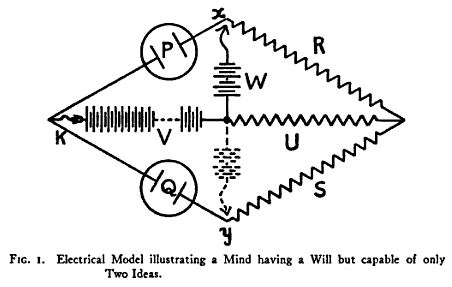A Shot to the Arse
I have some work in A Shot to the Arse, an exhibition coming August 14th at Michaelis Galleries, Cape Town. Many thanks to Belinda Blignaut!
Watch this space for more information on the accompanying Zine ‘BISM‘.
Presented by Michaelis Galleries, A Shot to the Arse explores the interrelationship between art and change; how artists process, comment on, react to or transform upheaval, violence, destruction and everyday experience.
Curated by Belinda Blignaut, it seeks to be a document of the spirit of our time, taking into account universal cycles of history repeating itself, and examining what counter culture is to us in 2012 – our emotional responses and cultural equivalents of political opposition running counter to a social mainstream.
In keeping with this subversive motivation, explorations of the theme will see a number of manifestations, through installation, sculpture, collage, drawings, gif-art, sound-works and performance. The main part of the exhibition will primarily be housed in the traditional gallery space – itself a site of contention – in which a unique provocative experience will be created exploring restriction, decay, growth and adaptation; from the human to the organic to the machine. However, in an effort to engage their art in an active conversation with society and the street, artists such as Steven Cohen will also facilitate a number of city interventions.
LISTEN TO MY EXECUTABLES
UPDATE (Dec 2012) : RAWTunes.exe 10 is a noise-art album made in homage to the now late, (great?) iTunes 10 release. As iTunes 11 makes its way onto computers across the globe this album will remain as a media-archive of splendid noises transcoded from iTunes 10 executables. Available for £7.99 on iTunes, now and forever (or as long as I keep paying the renewal fee).
 Last year I released a music single through iTunes. Entitled RAWTunes.exe 10.4.2, it was my first foray into sound-art/noise-art. Today, I AM a popstar.
Last year I released a music single through iTunes. Entitled RAWTunes.exe 10.4.2, it was my first foray into sound-art/noise-art. Today, I AM a popstar.
I am proud to announce the release of my 8 track album RAWTunes.exe 10!
You can listen to a selection of tracks below (making sure that all small children and dogs are at a safe distance), or buy the whole lot on iTunes for £7.99 (also at Amazon and Spotify)
RAWTunes.exe 10 by machinemachine | Released by GLTI.CH
It took me about 20 minutes to make this album. Here’s how you can do it yourself:
- Using a program like Audacity, open ANY file as RAW data (see this video tutorial for detailed instructions)
- Choose your conversion method
- The file you send to iTunes and release to the world MUST be in this format:
16 bit (sample size), 44.1 kHz (sample rate), 1411 kbps (bit rate) stereo wav
So, after playing with your file (or not doing anything in particular) export it with these options - Using a service like TuneCore, release your album to the world
- Become a famous Noise artist like me
I chose to convert a series of iTunes executable files, each one plucked from a long list of releases under the iTunes 10 label, but you can choose anything. Have a look on Soundcloud for a bunch of people who have done just this.
This is ‘art’, so of course my work has to be critically engaged, and self aware. Thankfully, iTunes regulations make this really easy:
Content that is not produced by Apple Inc. must not include the word “iTunes” anywhere in the metadata or cover art.
I would argue that the content of my album is 100% ‘produced by Apple Inc.’ but they wouldn’t let me call it ‘iTunes.exe 10’. It was only after several iterations of cover art that the album was allowed into the Apple store. These are just some of the woes that a true Noise artist must suffer in the pursuit of their art.



Binary Nomination
‘An important feature of a learning machine is that its teacher will often be very largely ignorant of quite what is going on inside, although he may still be able to some extent to predict his pupil’s behaviour.’
Alan Turing, Computing Machinery and Intelligence (1950)
Replenishing each worn-out piece of its glimmering hull, one by one, the day arrives when the entire ship of Argo has been displaced – each of its parts now distinct from those of the ‘original’ vessel. For Roland Barthes, this myth exposes two modest activities:
- Substitution (one part replaces another, as in a paradigm)
- Nomination (the name is in no way linked to the stability of the parts) 1
The discrete and the continuous are here again blurred by analogy. Electricity flowing and electricity not flowing: a binary imposition responsible for the entire history of information technology.
1 Roland Barthes, Roland Barthes (University of California Press, 1994), 46.
2 Roland Barthes, Elements of Semiology (Hill and Wang, 1977), 64.
3 Paul John Eakin, Touching the World: Reference in Autobiography (Princeton University Press, 1992), 16.
(Notes on) Rigid Implementation vs Flexible Materiality
Wow. It’s been a while since I updated my blog. I intend to get active again here soon, with regular updates on my research. For now, I thought it might be worth posting a text I’ve been mulling over for a while (!)
A couple of days ago I read this article in the Economist about a new breed of ‘Sloppy MicroChips’ designed to allow some errors to occur. Serendipitously, I also came across this old TED presentation by Daniel Hillis, and the meeting of these two things set off a bunch of bells knelling in my head. Hillis’ book The Pattern on the Stone was one I leafed through a few months back whilst hunting for some analogies about (digital) materiality. The resulting (overly-simplistic) brainstorm is what follows.
This old blog post acts as a natural introduction: On (Text and) Exaptation
In the 1960s and 70s Roland Barthes named “The Text” as a network of production and exchange. Whereas “the work” was concrete, final – analogous to a material – “the text” was more like a flow, a field or event – open ended. Perhaps even infinite.
In, From Work to Text, Roland Barthes wrote:
The metaphor of the Text is that of the network… (Barthes 1979)
This semiotic approach to discourse, by initiating the move from print culture to “text” culture, also helped lay the ground for a contemporary politics of content-driven media.
Skipping backwards through From Work to Text, we find this statement:
The text must not be understood as a computable object. It would be futile to attempt a material separation of works from texts.
I am struck here by Barthes’ use of the phrase “computable object”, as well as his attention to the “material”. Katherine Hayles in her essay, Text is Flat, Code is Deep, (Hayles 2004) teases out the statement for us:
‘computable’ here mean[s] to be limited, finite, bound, able to be reckoned. Written twenty years before the advent of the microcomputer, his essay stands in the ironic position of anticipating what it cannot anticipate. It calls for a movement away from works to texts, a movement so successful that the ubiquitous ‘text’ has all but driven out the media-specific term book.
Hayles notes that the “ubiquity” of Barthes” term “Text” allowed – in its wake – an erasure of media-specific terms, such as “book”. In moving from, The Work to The Text, we move not just between different politics of exchange and dissemination, we also move between different forms and materialities of mediation. (Manovich 2002) For Barthes the material work was computable, whereas the network of the text – its content – was not.
Noise; Mutation; Autonomy: A Mark on Crusoe’s Island
This mini-paper was given at the Escapologies symposium, at Goldsmiths University, on the 5th of December
Daniel Defoe’s 1719 novel Robinson Crusoe centres on the shipwreck and isolation of its protagonist. The life Crusoe knew beyond this shore was fashioned by Ships sent to conquer New Worlds and political wills built on slavery and imperial demands. In writing about his experiences, Crusoe orders his journal, not by the passing of time, but by the objects produced in his labour. A microcosm of the market hierarchies his seclusion removes him from: a tame herd of goats, a musket and gunpowder, sheafs of wheat he fashions into bread, and a shelter carved from rock with all the trappings of a King’s castle. Crusoe structures the tedium of the island by gathering and designing these items that exist solely for their use-value:
“In a Word, The Nature and Experience of Things dictated to me upon just Reflection, That all the good Things of this World, are no farther good to us, than they are for our Use…” [1]
 Although Crusoe’s Kingdom mirrors the imperial British order, its mirroring is more structural than anything else. The objects and social contrivances Crusoe creates have no outside with which to be exchanged. Without an ‘other’ to share your labour there can be no mutual assurance, no exchanges leading to financial agreements, no business partners, no friendships. But most importantly to the mirroring of any Kingdom, without an ‘other’ there can be no disagreements, no coveting of a neighbours ox, no domination, no war: in short, an Empire without an outside might be complete, total, final, but an Empire without an outside has also reached a state of complete inertia.
Although Crusoe’s Kingdom mirrors the imperial British order, its mirroring is more structural than anything else. The objects and social contrivances Crusoe creates have no outside with which to be exchanged. Without an ‘other’ to share your labour there can be no mutual assurance, no exchanges leading to financial agreements, no business partners, no friendships. But most importantly to the mirroring of any Kingdom, without an ‘other’ there can be no disagreements, no coveting of a neighbours ox, no domination, no war: in short, an Empire without an outside might be complete, total, final, but an Empire without an outside has also reached a state of complete inertia.
Crusoe’s Empire of one subject, is what I understand as “a closed system”…
The 2nd law of thermo dynamics maintains that without an external source of energy, all closed systems will tend towards a condition of inactivity. Eventually, the bacteria in the petri dish will multiply, eating up all the nutrients until a final state of equilibrium is reached, at which point the system will collapse in on itself: entropy cannot be avoided indefinitely. The term ‘negative entropy’ is often applied to living organisms because they seem to be able to ‘beat’ the process of entropy, but this is as much an illusion as the illusion of Crusoe’s Kingdom: negative entropy occurs at small scales, over small periods of time. Entropy is highly probable: the order of living beings is not.
Umberto Eco:
“Consider, for example, the chaotic effect… of a strong wind on the innumerable grains of sand that compose a beach: amid this confusion, the action of a human foot on the surface of the beach constitutes a complex interaction of events that leads to the statistically very improbable configuration of a footprint.” [2]
The footprint in Eco’s example is a negative entropy event: the system of shifting sands is lent a temporary order by the cohesive action of the human foot. In physical terms, the footprint stands as a memory of the foot’s impression. The 2nd law of thermodynamics establishes a relationship between entropy and information: memory remains as long as its mark. Given time, the noisy wind and chaotic waves will cause even the strongest footprint to fade. A footprint is a highly improbable event.
Before you read on, watch this scene from Luis Buñuel’s Robinson Crusoe (1954):
A Labyrinth (No Minotaur)
My sprawling review of the Goldsmiths Art MFA Degree Show, 2011
Originally published by Groupe d’Etudes Interdisciplinaires en Arts Britanniques
 The labyrinth. Turning; coiling. An allegory of improbable human journeys. Physical; mental; spiritual. Beyond; behind; within. But underneath the mythos and symbolism labyrinths are simple structures. The maze is corners, mere corners. Unfurl them all and the labyrinth becomes a cul de sac; a doorless hallway; a vanishing point leading nowhere.
The labyrinth. Turning; coiling. An allegory of improbable human journeys. Physical; mental; spiritual. Beyond; behind; within. But underneath the mythos and symbolism labyrinths are simple structures. The maze is corners, mere corners. Unfurl them all and the labyrinth becomes a cul de sac; a doorless hallway; a vanishing point leading nowhere.
Browsing an MFA final show can feel like an endless hall. No matter how many artworks you peruse, how many studio spaces you violate, how many £3 lukewarm beers on which you ruminate there’s always another curtain asking you to draw it back. I don’t mean to begin this review on a downer, indeed, given a few more paragraphs I hope to have you cursing yourself for missing this year’s Goldsmiths Postgraduate Degree Show. What I do want to do is move you away from the grand figure, the thread of Ariadne convincing you with its singular lineage that degree shows tell you something about the institutions that house them. Goldsmiths’ reputation, were I to spend 1,000 words bullying and poking at it, might tell us more in fact about the figure of the labyrinth than it does about the artists who have scrawled its name all over their curriculum vitae.
Kipple and Things: How to Hoard and Why Not To Mean
This paper (more of an essay, really) was originally delivered at the Birkbeck/London Consortium ‘Rubbish Symposium‘, 30th July 2011
Living at the very limit of his means, Philip K. Dick, a two-bit, pulp sci-fi author, was having a hard time maintaining his livelihood. It was the 1950s and Dick was living with his second wife, Kleo, in a run-down apartment in Berkley, California, surrounded by library books Dick later claimed they “could not afford to pay the fines on.”
In 1956, Dick had a short story published in a brand new pulp magazine: Satellite Science Fiction. Entitled, Pay for the Printer, the story contained a whole host of themes that would come to dominate his work
 On an Earth gripped by nuclear winter, humankind has all but forgotten the skills of invention and craft. An alien, blob-like, species known as the Biltong co-habit Earth with the humans. They have an innate ability to ‘print’ things, popping out copies of any object they are shown from their formless bellies. The humans are enslaved not simply because everything is replicated for them, but, in a twist Dick was to use again and again in his later works, as the Biltong grow old and tired, each copied object resembles the original less and less. Eventually everything emerges as an indistinct, black mush. The short story ends with the Biltong themselves decaying, leaving humankind on a planet full of collapsed houses, cars with no doors, and bottles of whiskey that taste like anti-freeze.
On an Earth gripped by nuclear winter, humankind has all but forgotten the skills of invention and craft. An alien, blob-like, species known as the Biltong co-habit Earth with the humans. They have an innate ability to ‘print’ things, popping out copies of any object they are shown from their formless bellies. The humans are enslaved not simply because everything is replicated for them, but, in a twist Dick was to use again and again in his later works, as the Biltong grow old and tired, each copied object resembles the original less and less. Eventually everything emerges as an indistinct, black mush. The short story ends with the Biltong themselves decaying, leaving humankind on a planet full of collapsed houses, cars with no doors, and bottles of whiskey that taste like anti-freeze.
In his 1968 novel Do Androids Dream of Electric Sheep? Dick gave a name to this crumbling, ceaseless, disorder of objects: Kipple. A vision of a pudding-like universe, in which obsolescent objects merge, featureless and identical, flooding every apartment complex from here to the pock-marked surface of Mars.
“No one can win against kipple,”
Dick wrote:
“It’s a universal principle operating throughout the universe; the entire universe is moving toward a final state of total, absolute kippleization.”

